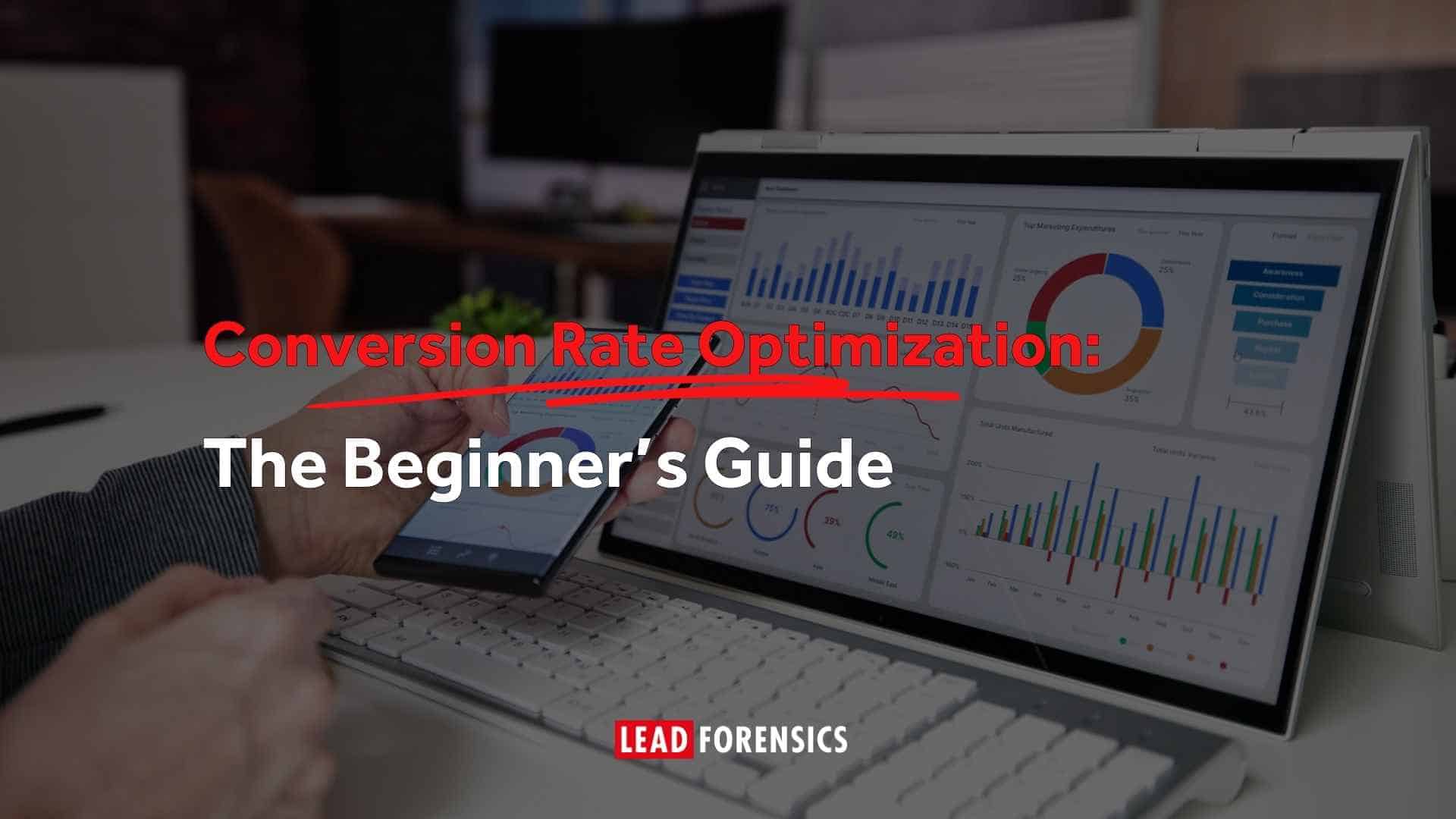Understanding Content Marketing
Before diving into the details, it’s important to have a clear understanding of what content marketing is and why it’s important. Content marketing is the practice of creating and distributing valuable, relevant, and consistent content to attract and retain a clearly defined audience. By providing valuable information and insights, you can build trust and credibility with your audience, ultimately driving them to take the desired action.
Content marketing is not just about creating random pieces of content; it’s about strategically crafting and delivering content that resonates with your target audience. It involves understanding their needs, interests, and pain points, and addressing them through your content. This approach allows you to establish yourself as a thought leader in your industry and position your brand as a trusted source of information.
One of the key benefits of content marketing is its ability to cut through the noise and capture attention in today’s digital landscape. With consumers bombarded with advertisements and promotional messages, it’s becoming increasingly difficult to grab their attention. However, by providing valuable and relevant content, you can stand out from the crowd and build a loyal following.
The Importance of Content Marketing
Content marketing plays a crucial role in today’s digital landscape. With the rise of ad blockers and the decline of traditional advertising effectiveness, businesses are turning to content marketing as a more effective way to engage with their audience. By delivering valuable information, entertaining stories, or educational resources, you can capture the attention of your target audience and keep them coming back for more.
Moreover, content marketing allows you to build trust and credibility with your audience. When you consistently provide valuable content that addresses their needs, you establish yourself as an authority in your industry. This trust and credibility can lead to increased brand loyalty, customer retention, and ultimately, higher conversion rates.
Another important aspect of content marketing is its long-term benefits. Unlike traditional advertising, which has a limited lifespan, content marketing has the potential to generate ongoing results. When you create high-quality content that is evergreen, meaning it remains relevant and valuable over time, it can continue to attract and engage your audience for months or even years to come.
Key Elements of Content Marketing
When crafting your content marketing strategy, it’s important to focus on a few key elements. Firstly, you need to clearly define your target audience. Understanding who your audience is, what their interests are, and what challenges they face will help you create content that resonates with them. Conducting thorough market research and creating buyer personas can provide valuable insights into your audience’s demographics, preferences, and behaviors.
Secondly, you need to define your marketing objectives. What do you hope to achieve with your content marketing efforts? Whether it’s increasing brand awareness, generating leads, or driving sales, your marketing objectives will guide your content creation and distribution. Setting specific, measurable, attainable, relevant, and time-bound (SMART) goals can help you stay focused and track the success of your content marketing efforts.
Furthermore, it’s essential to develop a content strategy that aligns with your overall marketing goals. This includes determining the types of content you will create, the platforms you will use to distribute it, and the frequency at which you will publish new content. By planning and organizing your content in advance, you can ensure consistency and maintain a steady flow of valuable information for your audience.
Lastly, measuring and analyzing the performance of your content is crucial for continuous improvement. By tracking key metrics such as website traffic, engagement rates, and conversion rates, you can gain insights into what content resonates with your audience and what areas need improvement. This data-driven approach allows you to refine your content strategy and optimize your efforts for maximum impact.
Setting Your Content Marketing Goals
Before diving into the execution phase, it’s crucial to take the time to set clear goals for your content marketing strategy. Without clearly defined goals, it will be difficult to measure the success of your efforts and make data-driven decisions. Start by identifying your target audience. Who are they, where do they spend their time online, and what are their pain points? By understanding your audience, you can tailor your content to meet their needs.
Identifying Your Target Audience
Understanding your target audience is essential for creating content that resonates with them. Conduct market research, analyze your existing customer data, and leverage social media analytics to gain insights into your audience’s demographics, interests, and behaviors. Armed with this information, you’ll be able to create content that addresses their pain points and provides solutions.
For example, if your target audience consists of young professionals who are passionate about sustainable living, you can create content that focuses on eco-friendly practices, such as reducing plastic waste, adopting renewable energy sources, and supporting ethical brands. By understanding their values and interests, you can position your brand as a trusted resource for sustainable living tips and advice.
Furthermore, understanding your target audience’s online behavior is crucial for reaching them effectively. Are they active on social media platforms like Instagram and Twitter, or do they prefer consuming content through blogs and newsletters? By identifying their preferred online channels, you can optimize your content distribution strategy and ensure that your message reaches them where they are most likely to engage.
Defining Your Marketing Objectives
Once you have a clear understanding of your target audience, it’s time to define your marketing objectives. Are you looking to increase brand awareness, generate leads, drive website traffic, or boost sales? Each objective requires a different content strategy, so it’s important to be specific about what you want to achieve. Set measurable goals that align with your overall business objectives and ensure they are achievable within a reasonable timeframe.
For instance, if your marketing objective is to increase brand awareness, you can focus on creating shareable content that resonates with your target audience. This could include informative blog posts, engaging videos, or visually appealing infographics that showcase your brand’s unique value proposition. By consistently delivering high-quality content that aligns with your audience’s interests, you can establish your brand as a thought leader in your industry and increase brand visibility.
On the other hand, if your objective is to generate leads, you can create gated content such as e-books, whitepapers, or webinars that require users to provide their contact information in exchange for access. This allows you to capture valuable leads and nurture them through targeted email marketing campaigns. By providing valuable and relevant content, you can build trust with your audience and increase the likelihood of conversion.
Remember, setting clear and measurable marketing objectives is essential for guiding your content creation efforts and evaluating the success of your content marketing strategy. Regularly monitor key performance indicators (KPIs) such as website traffic, engagement metrics, lead generation, and conversion rates to track your progress and make data-driven decisions to optimize your content marketing efforts.
Developing a Content Marketing Plan
With your goals in place, it’s time to develop a comprehensive content marketing plan. This plan will serve as your roadmap, guiding your content creation, distribution, and promotion efforts. Start by choosing the right content types. Consider your audience’s preferences and the topics that resonate with them. Whether it’s blog posts, videos, infographics, or podcasts, choose formats that allow you to deliver your message effectively.
When choosing the right content types, it’s important to dive deeper into understanding your audience. Conduct thorough research to identify the platforms your target audience spends the most time on. This will give you valuable insights into their online behavior and help you tailor your content to those channels. By analyzing their preferences, you can create content that aligns with their interests and captures their attention.
Experimentation is key when it comes to content creation. Don’t be afraid to try out different formats and see what resonates best with your audience. Test the waters with blog posts, engaging videos, visually appealing infographics, or captivating podcasts. By diversifying your content types, you can cater to different learning styles and preferences, ensuring that your message reaches a wider audience.
Choosing the Right Content Types
Content creation can take various forms, and it’s crucial to select the content types that align with your target audience’s preferences. Analyze the platforms your audience spends the most time on and tailor your content to those channels. Experiment with different formats to see what resonates best with your audience. Remember, the key is to provide value and engage with your audience rather than pushing a sales message.
When it comes to blog posts, focus on delivering informative and educational content that addresses your audience’s pain points. Offer practical tips, industry insights, and thought-provoking ideas that will keep your readers coming back for more. Videos, on the other hand, provide a visual and interactive experience. Use this format to showcase product demonstrations, interviews with industry experts, or behind-the-scenes glimpses into your company culture.
Infographics are a powerful way to present complex information in a visually appealing and easily digestible format. Use eye-catching designs and compelling data to convey your message effectively. Podcasts, on the other hand, allow you to connect with your audience on a more personal level. Share inspiring stories, conduct interviews, or host discussions on relevant topics to establish yourself as a thought leader in your industry.
Creating a Content Calendar
Consistency is key when it comes to content marketing. To ensure a steady flow of valuable content, it’s essential to create a content calendar. This calendar will outline the topics, formats, and distribution channels for your content. It will help you stay organized and ensure that you’re delivering content consistently to your audience. Be sure to include deadlines, responsibilities, and promotion strategies in your content calendar.
When creating a content calendar, consider the different stages of the buyer’s journey. Plan content that caters to each stage, from awareness to consideration and decision-making. This will help you nurture leads and guide them through the sales funnel effectively. Additionally, assign responsibilities to different team members to ensure accountability and smooth workflow.
Don’t forget to incorporate promotion strategies into your content calendar. Determine how you will distribute your content across various channels, such as social media platforms, email newsletters, or industry forums. Tailor your promotion strategies to each content type and platform to maximize reach and engagement.
By developing a content calendar, you can ensure that your content marketing efforts are well-organized, consistent, and aligned with your overall marketing goals. It will serve as a valuable tool to keep track of your content creation, distribution, and promotion activities, ultimately helping you achieve success in your content marketing endeavors.
Implementing Your Content Marketing Strategy
Now that you have your content marketing plan in place, it’s time to put it into action. This is where you’ll start producing high-quality content and leveraging search engine optimization (SEO) to increase its visibility and reach.
Implementing your content marketing strategy involves more than just creating a few blog posts or social media updates. It requires careful planning, research, and execution to ensure that your content resonates with your target audience and achieves your marketing goals.
Producing high-quality content is the foundation of a successful content marketing strategy. It’s not enough to simply churn out generic articles or blog posts. Instead, take the time to research each topic thoroughly, provide in-depth insights, and deliver value to your audience.
One way to make your content stand out is by using visuals. Incorporating relevant images, infographics, or videos can help break up the text and make your content more engaging. Visuals can also help convey complex information in a more digestible format, making it easier for your audience to understand and remember.
In addition to visuals, storytelling techniques can also enhance your content. Humans are naturally drawn to stories, so incorporating narratives or personal anecdotes can help create a connection with your audience. This can make your content more relatable and memorable, increasing the likelihood that your audience will share it with others.
Data is another powerful tool in content marketing. Including statistics, research findings, or case studies can add credibility to your content and make it more persuasive. Data-driven content is often seen as more authoritative and trustworthy, which can help establish your brand as a thought leader in your industry.
It’s also essential to stay updated on industry trends and emerging topics. The digital landscape is constantly evolving, and what may be relevant today may not be tomorrow. By staying informed, you can ensure that your content remains fresh and relevant, capturing the attention of your target audience.
Utilizing SEO in Content Marketing
While producing high-quality content is essential, it won’t yield results if it’s not properly optimized for search engines. Incorporating search engine optimization (SEO) techniques into your content creation process is crucial to improve its visibility and reach.
Keyword research is a fundamental aspect of SEO. By identifying the terms and phrases your target audience is searching for, you can strategically incorporate these keywords into your content. This includes using them in the title, headings, meta descriptions, and within the body of your content. However, it’s important to strike a balance and avoid keyword stuffing, as this can negatively impact your search engine rankings.
In addition to keywords, other SEO factors should also be considered. Optimizing your website for speed, mobile responsiveness, and user experience can improve your search engine rankings. A fast-loading website that is easy to navigate and provides a seamless user experience is more likely to rank higher in search engine results.
Furthermore, building high-quality backlinks is another important aspect of SEO. Backlinks are links from other websites that point to your content, indicating its relevance and authority. By earning backlinks from reputable sources, you can improve your search engine rankings and increase your content’s visibility.
Implementing SEO in your content marketing strategy requires ongoing monitoring and optimization. Regularly analyzing your website’s performance, tracking keyword rankings, and making necessary adjustments can help ensure that your content is effectively reaching your target audience and driving organic traffic to your website.
Measuring the Success of Your Content Marketing Strategy
To ensure the effectiveness of your content marketing strategy, it’s crucial to track key performance indicators (KPIs) and adjust your strategy based on the insights you gather. By measuring the success of your content efforts, you can identify what’s working and what’s not, allowing you to optimize your approach and drive better results.
Content marketing has become an essential component of any successful marketing strategy. It involves creating and distributing valuable, relevant, and consistent content to attract and engage a target audience. However, simply creating and publishing content is not enough. To truly gauge the impact of your content marketing efforts, you need to measure its success through various KPIs.
Tracking Key Performance Indicators (KPIs)
When measuring the success of your content marketing strategy, there are several KPIs you should track. These include website traffic, engagement metrics (such as time on page and bounce rate), social media metrics (such as likes, shares, and comments), lead generation, and conversion rates. Each of these metrics provides valuable insights into the performance of your content and its impact on your target audience.
Website traffic is a fundamental KPI to track as it indicates the number of visitors your content is attracting. By monitoring website traffic, you can identify which pieces of content are driving the most visitors and adjust your strategy accordingly. Engagement metrics, such as time on page and bounce rate, help you understand how well your content is capturing and retaining the attention of your audience. A high bounce rate may indicate that your content is not meeting the expectations of your visitors, while a longer time on page suggests that your content is resonating with your audience.
Social media metrics provide insights into how your content is performing on various social platforms. Likes, shares, and comments indicate the level of engagement and interest your content is generating. By analyzing these metrics, you can identify which social media channels are most effective in reaching and engaging your target audience.
Lead generation and conversion rates are crucial KPIs for measuring the effectiveness of your content in driving business outcomes. By tracking the number of leads generated through your content and the conversion rates of those leads into customers, you can determine the impact of your content on your bottom line. These metrics help you understand the ROI of your content marketing efforts and make data-driven decisions to optimize your strategy.
Adjusting Your Strategy Based on Analytics
Armed with the insights from data analytics, you can fine-tune your content marketing strategy to improve its performance. Identify content topics and formats that resonate best with your audience, and create more of that type of content. Experiment with different distribution channels and promotion strategies to maximize your reach. Additionally, listen to your audience’s feedback and adjust your strategy accordingly. By continually optimizing your approach, you can ensure long-term success.
It’s important to remember that content marketing is an iterative process. It requires continuous monitoring, analysis, and adjustment to stay relevant and effective. By regularly tracking KPIs and leveraging data-driven insights, you can refine your content marketing strategy and achieve better results over time.
Tips for a Successful Content Marketing Strategy
To create a winning content marketing strategy, it’s important to keep a few additional tips in mind.
Staying Consistent with Your Content
Consistency is crucial when it comes to content marketing. Whether it’s publishing new blog posts regularly or sending out a monthly newsletter, consistency helps you build credibility with your audience and establish yourself as a reliable source of information. Create a content schedule and stick to it, ensuring that you’re consistently delivering value to your audience.
Engaging with Your Audience
Content marketing is not a one-way street; it’s an opportunity to engage and interact with your audience. Encourage comments and feedback, and respond to them promptly. Foster conversations and build relationships with your audience by asking questions and seeking their input on topics. This engagement not only strengthens your relationship with your audience but also provides valuable insights for your content strategy.
Continually Updating Your Strategy
The digital landscape is constantly evolving, and so should your content marketing strategy. Keep an eye on industry trends, emerging platforms, and new technologies that can enhance your content delivery. Stay updated on the interests and preferences of your target audience and adapt your strategy accordingly. By remaining flexible and open to change, you can ensure that your content remains relevant and effective.
In conclusion, creating a winning content marketing strategy requires careful planning, implementation, and optimization. Understand your audience, set clear goals, develop a comprehensive plan, and consistently deliver high-quality content. Measure your success, adjust your strategy based on data analytics, and engage with your audience. By following these steps and implementing the tips outlined in this article, you’ll be well on your way to creating a winning content marketing strategy that drives results for your business.










